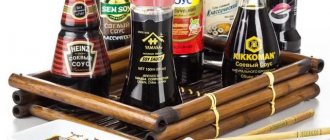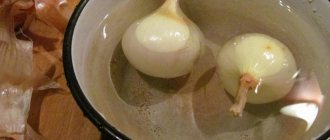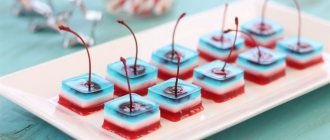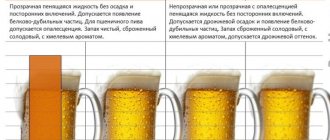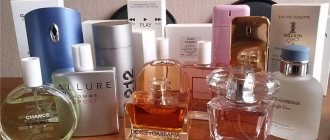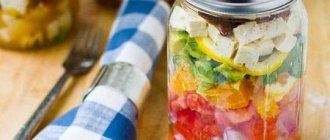general information
The brake substance is the main element of the vehicle stopping system. Only thanks to this substance does the process of brake pads and calipers work, which regulate the speed of the car. During operation of this liquid, moisture is gradually absorbed from the atmosphere. As a result, after a certain period of time, the boiling point changes and the viscosity of the above-mentioned auto fluid decreases.
Such negative processes disrupt the normal operation of the entire system and can cause its complete failure. Therefore, you should always know the expiration date of a given liquid and monitor its correct storage.
How long does brake fluid last in packaging?
When the composition is in a factory-sealed container, it does not interact with oxygen. Therefore, it can maintain technical characteristics for a long time. But even in a sealed container, storage of brake fluid cannot continue indefinitely. Over time, natural dehydration of some of its components occurs, affecting the degree of viscosity and boiling point of the composition.
According to international standards, brake fluids can be stored for 24 to 30 months in factory sealed packaging.
Once the container is opened, the shelf life of brake fluid is significantly reduced. Even if you pour just a little of the composition, moisture will get into the container. Moisture will react with the contents, which will significantly affect the quality of the product.
How long brake fluid can be stored after opening the container is determined by each manufacturer independently. Typically this period is no more than 12 months. If the storage time has been significantly exceeded, the product can no longer be used and should be discarded.
The main reasons for the decline in quality
Due to the fact that the chemical composition includes polyglycols and borate esters, there is a gradual accumulation of moisture in the working solution. And as mentioned earlier, the substance in the brake pads heats up until a vapor lock forms.
When the moisture in the fluid reaches more than 3.5%, such a substance is considered old, and if the moisture is more than 5%, it is urgently necessary to replace it. The technical characteristics of the liquid depend largely on the weather and climatic conditions of the environment. The higher the air temperature and ambient humidity, the faster the service life of the working fluid decreases.
Replacing brake fluid, choice
The most important characteristics of brake fluid 1. Boiling point - due to the fact that during braking the brakes and the brake fluid itself heat up, boiling of the brake fluid can lead to the formation of vapor locks, and, as a result, possible failure of the brake system. There are two boiling temperatures of brake fluid: the boiling point of a “dry” fluid, unsaturated with moisture, and a “wet” fluid, containing up to 3.5% moisture (the boiling point of a “wet” indirectly characterizes the temperature at which the liquid will “boil” after 1.5 -2 years of its work in the hydraulic drive of car brakes).
2. Viscosity characterizes the ability of a liquid to be pumped through the system. A frozen (all or in some places) fuel fluid can block the operation of the system, while a thick fluid will have difficulty pumping through it, increasing the time it takes for the brakes to operate. And too liquid increases the likelihood of leaks. Therefore, the viscosity must be within the limits specified by the standards.
3. Impact on rubber parts. Seals should not swell greatly in the fluid, reduce their size (shrink), or lose elasticity and strength more than is acceptable.
4. Impact on metals. Parts made of steel, cast iron and aluminum should not corrode in the TJ. Otherwise, the pistons will “sour” or the cuffs working on the damaged surface will quickly wear out, and the liquid will leak out of the cylinders or will be pumped inside them.
5. Lubricating properties. In order for the cylinders, pistons and cuffs of the system to wear out less, the brake fluid must lubricate their working surfaces.
6. Thermal stability - resistance to high temperatures and oxidation by atmospheric oxygen, which occurs faster in a heated liquid. TF oxidation products cause corrosion of metals and a decrease in boiling point.
7. Hygroscopicity - the tendency of polyglycol-based brake fluids to absorb water from the environment. The more water is dissolved in the fluid, the lower its boiling point, the fluid boils earlier, thickens more at low temperatures, lubricates parts less well, and the metals in it corrode faster.
8. Compatibility - the ability to mix with similar brake fluids without their components entering into a chemical reaction with each other.
!!! automakers are setting more stringent requirements.
Types of Brake Fluids
1. Mineral
They are various mixtures in a 1:1 ratio of castor oil and alcohol, for example butyl (red-orange liquid “BSK”). Such liquids have good lubricating and protective properties, are non-hygroscopic, and are not aggressive to paint coatings. But they do not meet international standards in terms of key indicators: they have a low boiling point (they cannot be used on cars with disc brakes) and become too viscous even at minus 20°C.
Mineral fluids cannot be mixed with glycol fluids, otherwise the rubber cuffs of the hydraulic drive units may swell and clots of castor oil may form.
2. Silicone
Manufactured on the basis of silicon-organic polymer products. Their viscosity depends little on temperature, they are inert to various materials, operate in the temperature range from –100 to +350°C and do not adsorb moisture. Their use is limited in particular by insufficient lubricating properties. Silicone-based fluids are not compatible with others.
DOT 5 silicone fluids should be distinguished from DOT 5.1 glycol fluids, as the similarity of names can lead to confusion. For this purpose, the packaging is additionally indicated: DOT 5 – SBBF (“silicon based brake fluids” - brake fluid based on silicone) DOT 5.1 – NSBBF (“non silicone based brake fluids” - brake fluid not based on silicone).
3. Glycolic (DOT 3, DOT 4, DOT 5.1)
Brake fluids based on polyglycols and their ethers are groups of chemical compounds based on polyhydric alcohols. They have a high boiling point, good viscosity and satisfactory lubricating properties. The main disadvantage of glycol fluids is hygroscopicity - the tendency to absorb water from the atmosphere.
In operation, this mainly occurs through the compensation hole in the reservoir cap of the master brake cylinder.
The more water dissolved in the brake fluid, the lower its boiling point, the higher the viscosity at low temperatures, the worse the lubrication of parts and the stronger the corrosion of metals. x
When should replacement be done?
This issue is quite relevant and important for the safe use of a car. Each manufacturer indicates on the surface of the canister the exact date of production and duration of storage in the container.
The shelf life of DOT 4 brake fluid, due to the presence of boric acid glycols in its composition, can be up to 24 months. It is necessary to replace the above-mentioned substance immediately after the first signs of a decrease in the performance of the car brake. On average, depending on operating conditions, replacement must be carried out every 60 thousand km.
Good to know: DOT 3 and DOT 4, what is the difference? DOT 4 and DOT 4+, what is the difference?
If necessary, you can check the condition of the liquid using a special tester. This device is a compact marker with a sensitive indicator that is lowered into the brake system reservoir. After a few seconds, the indicator is removed and the presence of water in the brake fluid can be seen on its sensor.
When to replace?
The manufacturer indicates the date of production, shelf life and use on the container. The chemical composition directly affects the duration of use. For example, Dot 4 includes, in addition to glycols, boric acid esters, which bind water molecules into hydroxo complexes and extend the service life to 24 months. A similar Dot 5 lubricant, due to its hydrophobic silicone base, is slightly hygroscopic and can be stored for up to 12–14 years. Dot 5.1 is a hygroscopic variety, so special moisture-retaining additives are added to it, which increase the shelf life to 2-3 years. The most hygroscopic liquid is Dot 3 with a service life of 10–12 months.
The average shelf life of brake fluid is 24 months. Therefore, it should be replaced at the first signs of a decrease in the effectiveness of the braking system or after every 60 thousand km.
How long can liquid be stored in its original packaging?
In a hermetically sealed canister, the working fluid does not come into contact with air and therefore can retain its original properties for a long time.
But, nevertheless, even under such ideal storage conditions, the inhibitory substance is also capable of losing its technical properties. According to existing recommendations, the shelf life of DOT 4 brake fluid when stored in original containers can be no longer than 26-30 months.
Recommendations for proper storage
In order for the brake substance to retain its chemical properties for the maximum possible period, the following recommendations must be followed:
- the importance of indoor air should not exceed 70-75%;
- ensure that there is optimal circulation in the room;
- keep containers as airtight as possible and always on a dry floor.
Dot classification
The Department of Transportation Management in the United States began dividing brake fluid into several classes, which was opened back in 1966, but officially came into force only a year later. According to this standard, all products are divided into classes depending on their properties. And since this standard prescribed the most optimal requirements for Ate Dot 4 brake fluid, other specialists from almost all countries of the world agreed with it.
The American standard has identified 4 classes:
- Dot 3.
- Dot 4.
- Dot 5.
- Dot 5.1.
In addition to the four classes listed, there is another variety - Dot 5.1/ABS. This product is intended for cars that have an anti-lock braking system.
All necessary information regarding their properties and application is indicated in the attached instructions. But these compounds have nothing in common with the American classification.
Summarizing
The shelf life of DOT-4 brake fluid in packaging depends on the operating conditions of the vehicle. Therefore, for the safety of driving a car, you should monitor the condition of this fluid and at the first signs of a decrease in technical properties, you must immediately replace the fluid.
Good to know: How often should you change the brake fluid in your car?
There are recommendations that the working fluid should be replaced every 60 thousand km. mileage The shelf life of DOT 4 brake fluid when stored in a container also has a warranty period of 26-30 months.
Application
But let’s now think a little with our heads about what we need. The first thought that comes to mind when reading the characteristics of the boiling point of brake fluids blatantly asks whether it is even possible to heat the brake fluid in the system to at least 150 °C, if we are initially talking about a bicycle?
The imagination pictures a mad downhiller rushing with the brakes pressed from the very top of Everest to its very foot. I have seen brake rotors heated to a temperature at which it is no longer possible to touch them, but the possibility of boiling the liquid itself seems unlikely to me. Therefore, we will leave the boiling characteristics to motorcycle racers and street racers, and will only focus on the fact that DOT 5.1 brake fluid has a large set of anti-corrosion additives that significantly extend the service life of the entire brake system.
